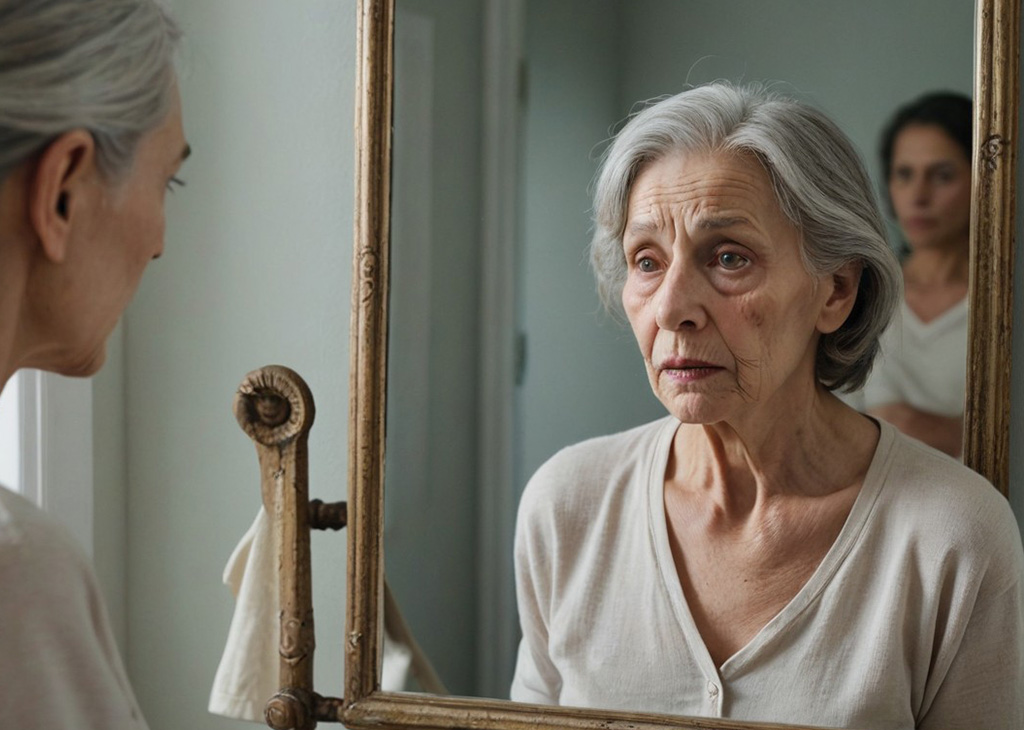Is Tech Really Making Us Younger, or Is It Just a Cash Grab?
Geriatherapy: There's Much to Like About America's 'Forever Young' Obsession: Hype, or Hope?
Late last year Forbes hit Calico, a Google-backed biotech group that had pledged to “crack the code on human longevity,” with a bombshell. Then bam — early 2025, a North American concern, Altos Labs, scored $300 million to “reverse aging.” My jaw hit the floor. Are you going to turn back the years! Or is this just a glitz-and-glam cash carnival? I'm diving into this anti-aging craze sweeping the U.S. and Canada to find out what's real — and what's just a slick sales pitch.

The Anti-Aging Boom: Dreams Meet Dollars
North America's Plotting to Stay Young According to QY Research, the global anti-aging market is valued at $63 billion in 2023, poised for a leap to $97.5 billion by 2030 — a sprightly annual jump of 6.5 percent. According to market stats the U.S alone was responsible for over 40% in Q4 of 2024. From wrinkle creams to gene tweaks, people are shelling out money like it's confetti to hold onto youth. A prime example: NMN, the latest “fountain of youth” pill — $100 will buy you a month's supply, and it is flying off Amazon's virtual shelves with 10,000-plus monthly bottles sold (Wall Street Journal, November 2024). In contrast Altos labs is going large, aiming to zap old cells with whatever they call Senolytics. “We're not peddling fantasies — we're rewriting life with science,” a co-founder, the Nobel winner Shinya Yamanaka, told reporters. Those are strong words, but do they hold any weight?
Why's everyone buying in? Fear's the fuel. According to the American Psychological Association's 2024 survey, 70 percent of North Americans dread aging — even more so, the 35-50s, in this case sandwiched between children and creaky knees. The anti-aging stuff feeds that panic, reframed as a high-tech lifeline. Who wouldn't shell out a few bucks to escape the bad news from the mirror?
Science: Michael Filipowich + Dale William Edwards
The Hype vs. The Hard Truth
It sounds like a fairytale, but science isn't popping the champers just yet. Richard Hodes, director of the U.S. National Institute on Aging, wrote in December 2024: “We cannot — yet — reverse aging. Slowing it? That's the best we've got.” Like senolytics — the dasatinib and quercetin drugs that clean out old cells. It increased their lifespan by 20 percent in mice, what about in humans? Meh. A January 2025 study in Nature said they assist with short-term inflammation, but long-term wins are at best fuzzy.
And then there's NMN, the Harvard professor's pet dietary supplement. He says it's reversed the body-clock back to 30 — cool story, bro. The problem is, the F.D.A. isn't on board, prohibiting the weight-loss help from being sold as a supplement after October 2024, citing flimsy safety data. Sinclair's hype, critics retort, is merely a commercial for his job at MetroBiotech. Aging's a messy stew — wear-and-tear on DNA, cellular burnout, metabolism glitches — no single tech's flipping the whole pot — was the succinct way Scientific American put it late last year.
What We Can Do
The experts all agree: we can turn back the dial on aging, not remove it. It's like MIT's Leonard Guarente puts it so bluntly: “Make a 70-young feel 60? Sure. Turn 70 into 20? That's sci-fi, not science.” It's depressing, but it's where we are.

The Money Machine: Who Is Getting Paid?
Big Players, Bigger Bucks
There are some deep pockets fuelling the frenzy for this anti-aging fever. Calico's burned more than $1 billion since 2013 and produced squat — staffers called it “rudderless,” Business Insider leaked in Q4 2024. Altos Labs, though? It's a billionaire bender — something only a Jeff Bezos or a Russian mogul named Yuri Milner could afford in the fashion of a personal immortality endowment. Then there's Bryan Johnson, a Silicon Valley mogul who is spending $2 million a year to follow his “age-reversing” regimen — pills, infusions of young blood, the works. “This has my numbers going,” he bragged on socials. Swipe the comments on the video: “Bro's bank account is aging more than his face.”
Bubble Trouble
Economist raised alarm in Dec 2024: this market was at 30-40% more than real. With both Calico and Altos treating riding on PowerPoint hype as a side show, let's see the beef, but where's the beef? It's starting to feel like a capital con — big promises, scant results.
What's Real Here: Confronting Aging Up Close
Tech's Limits, Life's Wins
Science can't zap away wrinkles yet, but your daily grind can slow the clock. The Association's 2024 report added that 150 minutes of brisk walking per week will help keep your ticker feeling young — and diseases of aging really don't like that. What the N.I.H. has to say: eat your greens, skip the junk and chill out, and your metabolism will likely, too. By Q1 2025, time finally caught up with 90-year-old Mary Jones—no pills, just outdoor walks, milk and real ZZZs. “Tops any billionaire's blood swap,” she says, with a grin. Simple? Yup. Effective? You bet.
Mind Over Matter
Here's a nugget: how you feel about aging matters. Its adherents live 7.5 years longer than grumps, a 2024 study in Psychology Today showed. You cannot circumvent the years, but you can dictate how they go.
Sorting the Buzz From the BS
No sleep on North America's anti-aging train's still chugging—Altos Labs has got big plans for gene therapy this year, with rumored price tags of tens of thousands a pop. Capital's churning it out, but is it a peace of mind we're buying? Tech's got juice, no question, but for the time being, it's a rich kid's plaything — not our daily fix.
Science says halting aging is the pipe dream; the action is in slowing it. The miracle pills don't work, but borrow a line from Mary — get a little exercise, eat right, slow down. Longevity is wonderful, but life is brief, and living well is about more than living long. What's your take? Is tech our path to youth, or are we just pawns in a billionaire's chess game? Drop me a line in the comments — let's tussle with this!
